WHAT IS QUIET QUITTING,
and what can you do about it
A LIFE ENGINEERING WEBINAR
WEBINARS
WHAT IT'S ABOUT
Everywhere we turn, people are talking about quiet quitting.
It’s become an official occupational phenomenon. First it was “The Great Resignation” where people would just quit and leave, and we saw employees leaving the market in record numbers.
But with quiet quitting, they don’t quit and leave, they quit and stay.
They’ve completely disengaged from their work, and this comes at a tremendous cost to the organization.
What’s this all about? Why is it happening? More importantly, is it happening to you? And if it is, what can you do about it?
In this free webinar, sponsored by LG Resources, we’ll interview Employee Engagement expert, keynote speaker, and Human Capital thought leader, Rusty Lindquist.
He’ll answer all of these questions, and many more.
what you'll learn
-
The psychology and science of quiet quitting
-
The impact of quiet quitting on your culture
-
The impact of quiet quitting on your customers
-
The impact of quiet quitting on your bottom line
-
What are the causes of quiet quitting?
-
How do you diagnose quiet quitting?
-
How can you solve quiet quitting?
INTERVIEW WITH
RUSTY LINDQUIST
Rusty has been studying the intersection of organizational psychology, motivational psychology, cognitive psychology, behavioral economics, and game mechanics for over 25 years.
He’s overseen millions of dollars of research into human performance and engagement, with his own, dedicated science team.
As founder and CEO of Life Engineering, Rusty now works to bring that science to the world through A.I., technology, and training to power human achievement.
Rusty is a writer and keynote speaker, and a proven thought leader in human capital management. Rusty has delivered over 60 speeches and is consistently rated in the top 5% of conference speakers.
Unlock free access
Simply fill in the information below to access this webinar recording and all other webinar resources.
CONGRATULATIONS
YOU'VE UNLOCKED ALL WEBINAR ASSETS!
Webinar Video
Webinar SLIDES
click a slide for a larger view
you can also view an
A.I. generated TRANSCRIPT
to read, or search for text
Good afternoon, everyone. Thanks for joining our webinar today about quiet quitting. We are so excited about this time. We’re going to get started in about just about a minute or so. We’ll let everyone trickle in here. So hold tight. We’ll get started in just about 1 minute. If you are just joining us, we’re going to get started in about an under a minute now, just letting people trickle in still. So Thanks for joining us for our webinar. We’re really excited about the content we have to share today and give us about a minute. We’ll get started here shortly. I see quite a few people still joining in, so we’re going to go ahead and get started. This webinar is being recorded, but I want to be respectful of everyone’s time, so Thank you for joining us today. My name is Brett Fritz with LG resources. Really excited to be sharing and meeting with each of you today for our webinar called What is quiet quitting and what can I do about it? So we’re really excited about this time and for the next, let’s say 35, 40 minutes, we’re going to be talking with rusty Lindquist for life from life engineering, and then Sarah Heard is here as well. So really excited about the time that we’re going to be going through just a couple of logistical items. This webinar is being recorded and so we will be sending out a post webinar follow up with plenty of content, the recording itself and some of the visuals that rusty is going to share. So look for that coming over in the next couple of days. Second, if you have any questions, please open up the Q&A box or the chat box. We will be monitoring that during the session today. So please jump right into that and ask any questions that you have. But with that said, let me just do a quick introduction. So, rusty, we are so excited to have you. You and I have spent a lot of time together. And I am so anxious just to really pick your brain today. But can you tell us a little bit about yourself and some of the exciting things you’ve done in your background? Certainly, Yeah. I so I’ve been fascinated with. With people for a long time. And I’ve spent the last 20 years really working on understanding what causes people to engage, engage in life, engage in relationships, engage in their objectives, engage at work. What causes them to disengage? What causes them to be successful? And we a few years ago, about four years ago, we raised about $10 million. And we hired a science team and a bunch of management consultants. And we really dove deep into studying this aspect of quiet quitting that we’re going to talk about today. And I feel like this is just such an important topic. And so I’m the founder and CEO of life engineering. Our whole objective is to really help individuals and organizations achieve the excellence they’re capable of through increasing engagement. Very cool. Very cool. Yeah so so we’re going to just jump right in because this concept of quiet quitting, it seems like it kind of came out of nowhere, right? Like we all lived through this pandemic. Some would say it’s still going on. But tell me what is quiet quitting, you know, and what exactly does it mean and how is it impacting individuals and companies alike? Yeah, that’s a good question. The phrase quiet quitting. There’s some argument and debate around really who originated it. But, you know, sort of the match that started the wildfire was this TikTok video. And it’s interesting because, you know, we’ll get a little bit later when we start talking about how pervasive this epidemic of quiet quitting is, especially in the younger generations. But there was this gentleman that did this, you know, 20 some odd second video on TikTok where he mentioned quiet quitting and he had heard about it from somewhere. And he did this video and all of a sudden it’s now got millions of views and it really stomped on a nerve, especially in this younger generation that frequent, you know, TikTok. And it kind of became quiet. Quitting kind of became this banner, right? This anti organization, this anti work banner. And it kind of became this hodgepodge, a sort of a cauldron of all anti work sentiment. Right and so it’s now kind of become sort of the frontline defense against everything from we need more balance in our work life. We need we shouldn’t have to do free overtime. We shouldn’t have to invest so much of ourselves. We shouldn’t have to kowtow to customers like we. It’s kind of become, you know, revenge ISM, really kind of putting it to the man. And there’s a lot of legitimate things that are in there, but we need to really make sense of quiet quitting and get it sort of redefine its boundaries in a way where we can have a successful conversation about it and really know what to do about it. We kind of have to separate some of these things. And so really quiet quitting is this aspect where we disengage from work and in this form, in this way, like quiet. Quitting is a new phrase, but it’s just sort of a new label on a really, really old term and disengagement. Employee disengagement or the idea of disengagement has, of course, been around for a long time and it’s been studied for a long time. Quiet quitting is simply where someone becomes so disengaged with where they work and who they work for and what they’re doing and why they’re doing it, that they just stop putting effort and energy and emotion into it. And so it’s really an emotional you know, it’s really an emotional problem. In fact, you mentioned this idea of like, well, what does it mean? I have I have an analogy that I like to share. Let me share my screen that really kind of helps. US identify the impact that quiet quitting has on performance, on individual performance, on relationship performance, life performance and organizational performance. So quiet quitting is, as I said, this sort of it’s this idea around disengagement. And this has become so pervasive that about 2017, the World Health Organization actually declared this engagement unofficial occupational phenomenon, and that kind of incited a whole bunch of interest around, OK, well, what is this? Does it really matter? Because it’s like, you know, CEOs and organizational executives and leaders all around, they’re like, all right, well, they’re asking a critical question. I care. We hope they care about how our employees feel, about where they work and who they work with and who they work for and why they do their work. How much does. How how much they care actually impact the work that they do. And as we kind of dial in on this landscape of people performance and we ask ourselves, what is it that leads to peak performance that gets us the ultimate results that we want to get? And we kind of look at this landscape with two through. Through two main lenses. The first sort of slope of this is time. And there’s all kinds of research and effort and energy and attention that goes into how we use our time. Right this is productivity. And then the other part of this is talent. And organizationally speaking, like we spend a lot of time fixating on these two aspects of time and talent when it comes to performance. And so we try to optimize time, we try to increase, we try to have procedures and processes and make sure that people are productive. And we try to hire the best talent. We recruit that talent, manage that talent, reward that talent, try to develop that talent. And really, these are the two things that we focus on when we try to drive performance. And these are easy. We do this because these are really easy to focus on. They’re they’re sort of above the line. They’re above the waterline of our organizational attention, and they’re observable. These are the actions. These are the things that we do with our time and our talent. And because of that, when it comes to performance, that tends to be all we focus on. But in reality, there’s something that’s much more important that we often exclude from our attention, and that’s what’s below the waterline, and that’s really the energy that we apply to the work that we do. It’s the energy that we have for the work that we do that really drives up the impact of our time and our talent. And that energy can really be measured by understanding the level of satisfaction. We have for the things that we do and how engaged we are in those things. And that really constitutes the emotional landscape of what we bring to the things that we do, to the relationships that we’re in, to the jobs that we have, to the objectives that we pursue. It’s the sentiment we have. And it’s interesting in organizational setting, what happens is we hire for talent, right? And then we give them time. And what we expect is performance. But at the moment, we hire someone there full of energy, like you’ve been there and I’ve been there. And we’ve seen it so many times. When you hire someone, they’re emotionally all in. When we first start a job or an initiative or a relationship or whatever it is, like we have all of this emotional energy, but because we’re human, that energy doesn’t last. It’s perishable, it has a shelf life. And when it fades, when that energy fades, so too does the impact of our time and our talent. And what’s left is a performance gap. Now, it’s even more interesting because what happens inside an organization and with most managers and leaders is when we see a performance gap, how do we try to fix it? Well, they need more time or maybe they need more training, like it’s a talent problem. And ultimately when we give them more time or we try to train them and fix the talent, if there’s still a performance gap, we erroneously, often erroneously conclude, well, it’s a problem with the talent themselves. And so we terminate the talent and we hire someone, we hire someone new. And we just kind of begin this cycle when in reality, the only reason they are underperforming is not a time problem. And it’s not a talent problem, it’s an energy problem. In fact, the research shows that someone who is disengaged, who is quietly quit, is only delivering about 20% of their total performance capacity. And so, organizationally speaking, we’ve got to pay attention how to this aspect of quiet quitting, this aspect of engagement, because it’s our ability as leaders and managers, as parents, as individuals who want to optimize our lives. It’s up to us to be able to optimize the energy, to drive back up the impact of our time and talent and get us to performance. And that’s really sort of this, you know, this what’s happening here with quiet quitting. Yeah so I love the visual there. So Thanks for walking us through that. I’ve got a friend I caught up with. I hadn’t talked to him in a couple of years. The pandemic hit. We kind of lost touch. But I reached out to him recently and I said, hey, How’s work going? Like, what are you up to? And his comment to me was so interesting. He said, they haven’t fired me yet. And it was one of those moments where I was like, are you not happy? Like, I didn’t say that right. Because I don’t know what’s going on in his personal life right now, because it’s been a while. But I could tell he was like he was quiet quitting. Right he was just waiting and he just didn’t sound engaged at all. And I was like, oh, man, I’m so sorry to hear that. That’s how you’re feeling right now. But I think that sentiment that you felt from him is something that is being felt right now by a lot of people. It’s really sad, too, because we are more deliberate about measuring and trying to get optics on quiet quitting in the workplace because we are because we have a financial incentive to do so to measure the impact of quiet quitting in the workplace. The problem is it’s not just at work. People are quiet, quitting in their relationships. People are quiet quitting in life in general. They’re just not emotionally invested. They’re just not all in. They’re just not. And because of that, they’re suffering from an opportunity cost of what they could achieve in those relationships or towards those objectives or in their life if they would only emotionally engage. Well, I can tell you, I’ve already learned something new. I can tell my kids that I talked about TikTok. So that’s exciting. Yes so so why do you think it’s happening right now? I mean, as you said, this has always been going on. We’re just we’re putting a label on it, though. Is this related to the pandemic? I mean, is this just something that is just becoming more mainstream now? Why is this happening? Yeah, that’s a good question. Actually you know, your story is appropriate and sort of leads into this narrative around why it’s happening right now, you know, and arguably not arguably the evidence really like the evidence supports that it’s happening now more than ever before. Because what he said is they haven’t fired me yet. This is a sentiment that is really shared by a lot of individuals. In fact, let me share let me share what my screen with talk about what’s happening here. So we sort of have been going through this period of time that has been called the Great Resignation. And this has really been the past couple of years where we have more people exiting the workforce, the workforce than ever before. This has been causing a lot of problems for employers who are trying to find talent. There is a surplus of jobs and a deficit of talent. And so, what’s happened what’s happening is that there is an evolution of this movement where people have all of a sudden realized, you know what? I don’t have to quit and leave. I can actually just quit and stay. And they won’t fire me. They haven’t fired me yet. You know, I’m not investing everything that I have to offer. And it’s got to be noticeable. And sometimes it’s more noticeable for some than others based on where you are in this spectrum of disengagement. But this aspect of disengagement, you know, is sort of the evolution of this great resignation. And so what we see and this is the reason why I actually think it’s going to get worse before it gets better, is that this has now become a movement that has gained momentum. And, you know, this idea of momentum, this momentum, this energy of motion that fuels more motion is a very real thing. It happens with individuals. You know, people in motion tend to stay in motion. People at rest tend to stay at rest. Organizations in motion tend to stay in motion. Ideas in motion tend to stay in motion. Movements in motion tend to stay in motion. This tik-tok video really stomped on a nerve in society. And now it’s become a movement. And that movement is this graduation of, you know what, I don’t have to quit and leave and stop getting a paycheck. I’ll just quit and stay. I’ll just stop investing. I’ll just stop working so hard. And so this leads to the second sort of in this there’s like this trifecta of what’s happening right now that’s kind of created a perfect storm to allow for this movement to continue, which is that what we have right now is this aspect of economic enablement in such a tight labor market where we are struggling just to find enough employees to do the work we need to do to reach the outcomes that we’ve committed to. Employees can get away with it. It’s like this person says, it’s like, well, they haven’t fired me yet. Well, that’s because employees are continually thinking, well, what are you going to do, fire me? I know how hard it is for you to find someone else. In fact, you know, Julia Pollak, who is a chief economist for ziprecruiter, said this I love this quote. I thought it was so on target. With layoffs and firings at a record low, people have unprecedented job security. And so the risk of termination is lower. And that’s also why the incentive to work harder, which is engagement is reduced. The consequences of being found to shirk have just become much smaller, one, because companies can’t afford to fire people. And two, because there are so many alternatives out there that if you do lose your job, you have somewhere else to go. And so what employees have found is that there’s just this unprecedented level of organizational tolerance for underperformance right now because of this tight labor market. And then the third aspect of this is that we’ve got this technological enablement that is, there’s high opportunity transparency right now. It’s so easy to go online and find opportunities of places to work. Technology has really done a good job of creating transparency in the workforce around opportunities that exist. And then the technologies, especially with remote work or hybrid work, has made like the switching cost, the cost or the friction around switching jobs, you know, near frictionless. And so right now there’s just this high employee confidence that, you know what, if at any time I actually do want to quit or if you fired me, I could go get a job and probably even make more money. And I could do it, you know, in a heartbeat. Yeah Yeah. So, I mean, another term I’ve heard on times and it’s not as frequent because I think it’s more of the negative side of this is quite firing right. So how do they relate to each other like what’s I’m starting to see the difference here but how would you define quiet firing versus quiet quitting and how does that relationship between the two work? Yeah, that’s a good. That’s a good question. So it’s kind of funny in when this whole sort of. Kerfuffle started happening around quiet quitting a lot of managers and executives and just kind of. It became unmoored. They just kind of. Well, and so they’re reacting now. And the way they’re reacting is. Is what’s become known as quiet firing. And so employees have to be really, really careful because quiet firing is a real thing. And it, too, is sort of like a new name on an old idea. The way it used to be called is you were being managed out or you are being led out to pasture. Where what happens is, is a leader or a manager is surveying the landscape of their employee pool, and when good opportunities come, who are they going to give those good opportunities to? The employees who show the highest level of commitment and engagement know they can sense who’s engaged and who’s not engaged. You don’t really need some sophisticated metric to be able to just observe these things. You can sense who’s engaged and who’s disengaged. And when you send someone who is disengaged, you’re not. You just don’t feel like you can trust them with your most important projects. And so because of that, you give your most important projects. So the people who have the highest level engagement and then over time what ends up happening is you just are only you’re allowing them to contribute the bare minimum and you have to be really careful because what will happen is ultimately and inevitably. The economy will turn around and when the economy turns around and all of a sudden because of all of these economic drivers. Managers and leaders are going to have to start making decisions around who do I who do I keep? Who stays and who goes? And the first people to go will be the people who have been quietly fired. Right they’ve been sort of been prepared to depart. And so employees have to be really careful about quiet quitting. Now, this doesn’t obviously just to make sure that we mention what I don’t think needs to be mentioned, but I’ll mention it just in case. Certainly there are instances where you work in a toxic environment or for a toxic manager. It’s been said people don’t leave bad organizations, they leave bad managers. And this happens. And there are certainly times where sometimes the work setting that you’re in is one that is unreasonable. But quiet. Quitting is never the answer. Good conversations with your manager setting expectations or just flat out quitting and going somewhere else like this is a great time to go find somewhere else that you can be more engaged in. But quiet. Quitting is just not the right answer for an employee, no matter what the situation is. So at LG resources, we talk to businesses every day and I hear time and time again business owners and leaders are telling us we’ve had a hard time hiring or we lost employees because of the pandemic. We couldn’t keep our employees engaged. Right, because the workforce changed the dynamic change. The economy changed. Right so, yeah, let’s get back to quiet. Quitting here for a second. I mean, you know, you’ve got these three pillars that are driving it, right. And like, it seems like a big deal because I’m in the weeds on it every day hearing businesses say it. But is this really a big deal or is this just is it another TikTok fad? I mean, are we going to know, it’s is this the is this the ice box challenge where you dump ice in your head and then it goes away later? Or is this really not going anywhere? Yeah, that’s a good question. Certainly, we have the kind of anecdotal evidence of by simply seeing the popularity of posts on TikTok and other places where based on simply the number of views, you can see that there’s some this is a big deal. But actually there’s an organization called Gallup and Gallup studies employee engagement every year, and they’ve been doing this for decades now. And in fact, let me share with you the latest data from Gallup to just kind of give you a sense of how big a deal this actually is. So the way that Gallup and most organizations like ourselves that have made a science out of studying engagement. We kind of all agree that there’s three categories of engagement. The first category is people who are actively engaged. They are emotionally invested. They care. They’re committed. The second category is not engaged. There’s just no emotional investment. And then the third category is actively disengaged. These are individuals who have a negative emotional investment. These are individuals who have become toxic. They’re the active and vocal. This is the real these are the real culture killers inside of an organization. And so employees fall into these three broad categories. And we measure these categories differently now in 2020. The engaged. This was a survey that was done out of Tens of thousands of employees across hundreds of organizations all over the world. And what they found was that 36% in 2020 of employees were actively engaged. 50%, which is a staggering number, just didn’t care where they were. They constituted this category of not engaged 50% Half of the workforce shows up to work every day, just not caring. And then of the actively disengaged, it was 14% 14% of the organization is actually probably actively working against the organization. Now, in 2020, in 2021, we saw the greatest decline of people who are engaged in over a decade. 36% went to 34% in 2021. Interestingly, the not engaged category remained solid at 50%, but the number who are actively disengaged gobbled up all of the lost percentage of the engagement. They rose to 16% So now you have and this kind of goes to the parade, principal Vincenzo pereda, who is the Italian economist and studied ps and and population demographics and taxes and found that 80% of the work is done by 20% of the people 80% of the product of his ps were created by 20% of the peapod plants. 80% of the wealth in Italy was generated by 20% of the population. This 80/20 rule is really interesting and what we find is that the engaged workforce is really doing the majority of the work that really matters inside an organization, and that’s an increasingly shrinking percentage. So the numbers haven’t come out for the second half of 2022 yet, but we have the first half of 2022. And up through the second quarter, what we see is another precipitous drop. 32% are engaged now. Again, 50% like we’ve got this solid, steady state amongst the not engaged, which clearly shows we’re not doing a good job as employers, as leaders, as managers. We’re simply not doing a good job of helping people care about the work that they do and the teams that they’re on and the customers they serve. Clearly, we’ve got to do better at this. And the number of people who are actively disengaged went up to 18% So what we have then is up to 68% of the workforce is something other than engaged. 68% of the workforce. And referring back to that original data point that I shared earlier, that a disengaged employee is only delivering about 20% of their total performance capacity. Well, when you think about almost 70% of my workforce is doing 20% of the work that they’re capable of. No wonder this is an official occupational phenomenon. And it shows up in other ways. You know, a disengaged employee does 20% of their work. A disengaged employee, according to Gallup, can cost in hard cost up to 34% of their annual salary. A disengaged employee has 37% higher absenteeism and 15% lower profitability. And this is up to 70% of the workforce. So this is an incredibly big deal. Yeah Yeah. So I think that lasts. I mean, this stats these stats are amazing, but three out of every 10 employees are the ones that are engaged. That’s astounding, right? Like, if you think about an organization that has 100 employees, 70 of those 100 employees are coming into work, not engaged or unengaged, not caring. That’s actively working against the organization. That’s unbelievable. Yeah and then that next slide of stats shows the impact there. So I mean, what we move on from the impact. So this is sort of well, this sort of represents. How big of a deal it is. Broadly speaking. But there’s another lens on this that I think is fascinating. And about a few years ago, again, as we have seen, this ongoing, precipitous drop in the number of employees who are actively engaged in an organization. It’s inspired all kinds of different studies. And there was a three year study that was written about in the Journal of occupational and organizational psychology that tried to measure the correlation between employee sentiment and customer sentiment because there’s this big prevailing question, which is OK they’re disengaged, I understand, and get that it could impact performance, which is essentially how much we can produce, but does it actually impact our employees? And interestingly, so they did this three year longitudinal study to measure the correlation between employee sentiment, sentiment and customer sentiment. And here’s what they found. The correlation coefficient, which is a measure of how correlated these things are, is a 0.43. Now, just by way of comparison, the correlation between smoking and lung cancer. Is a 0.08. The correlation between the how effective ibuprofen is on reducing pain is a 0.14. The correlation between how your employees feel about the work they do and the teams they’re on and who they work for and what customers they serve and why they do it. And customer satisfaction is a 0.43. In fact, there’s an organization that’s here locally in Utah called overstock, who I we were just at a conference and I was hearing him speak and he was talking about their low employee satisfaction numbers. And they used a metric called end to measure employee satisfaction. The NPS is like this sort of become this industry standard. You’re probably familiar with NPS, which is the net promoter score. The net promoter score is this measure of it’s this survey that you often get. How likely are you to recommend this product to a friend? And then why? About a decade ago, Apple was like, you know, we should ask this question of our employees. How likely are you to recommend Apple as a place to work? And because what the science showed after a number of empirical studies was that the willingness to recommend is the number one indicator of satisfaction. And so they created what is called NPS or employee net promoter score. And so Overstock was doing this employee net promoter score and their scores were really low. In spring of 2019, it was a 2 in the fall of 2019, it went to a negative 7. And so the CEO is like, we have got to do something about this. And it’s a whole different story about what they did and how they solved it. And it’s fascinating. But they went all in on trying to solve for employee satisfaction and their employee metric just skyrocketed. 4140 742 so I came home and I was like, I wonder how that corresponded to market performance. So I have an overlay that shows their stock performance with that graph. And here’s what that looks like. As you can see, when you increase, when you solve, when you decide to actually care about what your employees feel and how they feel and why they feel that way and solving for that. You not only end up impacting the lives and the families of those employees, you drive positive customer and market outcomes. And I think that’s a really strong argument for why we should do this. I think it’s good to note, too. I mean, it looks like the overlay here from the stock price, there’s a delayed effect, too, right? Like, you know, you get the employee satisfaction numbers to go up in the spring of 2020, but their stock didn’t go up right away. It’s not like it’s a day delay, right. Like you’re going to see some improvements from your employees over time there. So that I think that’s a neat visual to look at there. Now, when I talk to organizations, I think, first of all, I ask, are you measuring employee satisfaction and employee engagement? Because if you’re not measuring employee satisfaction and employee engagement, I mean, if you think of the iceberg and the science backs this up, this is behavioral science that we did ourselves. The science backs this up that the number when it comes to time, talent and energy, the number one driver of performance is neither time nor talent, but energy. And so if this is the number one driver of performance, is the energy your employees have for the work that they do and the teams that are on and the customers they serve. If this is so important, the question the first question is, how are you measuring it? And then if you are measuring it, are you solving are you really listening and understanding and solving for it? And the reality is like if you were to take your whatever your company is, whatever your product is, whatever your whether you’re publicly traded or private, if you just like if, if, where you are today represents the left side of this chart, if you decided to go all in on solve like Overstock did on solving for employee sentiment, satisfaction and engagement, what lies in front of you is the right side of this chart and what can that mean for you? And think I that’s the reason why we really should care about this. I think the chart speaks for itself. So I know I want to get into a little bit here of what your company does. But before we get there, because I know you get really deep into the causes around this and you’ve got some elements that tie into I want to dig into that. But first, let’s pivot because you start to talk about measurement there, right? So so how do we measure it? I mean, satisfaction, that’s one thing, right? You can see people smile with their faces when they show up to work. But how would you suggest the measurement to take place. And then start to tie it back to how your company works to measure that as well? Yeah so. Let me let me approach this like this. So we. So so, first of all, there’s really two main aspects as we have found to employee sentiment that emotional undercurrent inside your organization that creates the energy that people have for the work they do and the teams are on and the customers that they serve. So you have to understand how to measure it, how to understand this psychological process of engagement and satisfaction and to explain this. I have a. I have a slide. I can share. So we look at this as though it were an orbit and Simon Sinek wrote a wonderful book. And if you hate words you can watch the Ted Talk and it’s you’ll get most of it from there as well. But he wrote this book, start with why. Right and the reality is. Whenever we engage in anything, right? A new relationship, a new setting, a new objective, we decide to go to school. We decide to get a job. Whatever it is that we do, there’s a reason why. And we subscribe to that. Why and there’s like a gravitational pull that y exerts over us and it draws us in to an orbit of engagement. And for a while. We are in a stage of peak engagement. Right this is always what you experience at the beginning of projects and tasks and relationships and work and everything. But at some point, because we’re human and this is normal, you know, we exit that state of peak engagement or flow because of a departure trigger. Something happens. And when that something happens, we actually go through a process called emotional distancing. And you can think about employees on your team. You can think about yourself and your job. You can think about yourself and your relationships. And you see this. You go through this, this process of emotional distancing where you’re trying to relieve the relieve the cognitive dissonance to explain away why you just felt so utterly engaged before. And now you don’t. And so you try you start to create this narrative that allows emotional separation from the thing that you were once so engaged in. And if nothing is done, that orbit decays even further and becomes solidifying resolve. And this is where you start to solidify your resolve to exit that thing, that relationship, that job, that objective, whatever it is. If nothing is done from there, you get into this next category, which is called the crystallization of discontent. It’s where you’re discontent for how things were, is suddenly crystallized to the point where you are experiencing active animosity. Now, if nothing is done from there, the gravitational pull of the orbit that you were once in is no longer great enough to hold you. And you reach escape velocity. You see with employees and individuals and in your own life, these categories over here is where we experience maximum emotional sensitivity. And we see this, there’s, there’s a high degree of emotional volatility because we would become emotional. We’re no longer sort of treating this thing as a rational thing. We’ve become very emotional about it. And the organization or the objective, or the relationship has the lowest gravitational pull because you’ve just separated yourself from it. Now, this is a natural journey of disengagement. And so what we wanted to do is we sort of, as we studied this psychological process of disengagement, we asked ourselves, all right, well, what is it that is the departure trigger? What is it that causes? And what is it that creates the mass of why that keeps us engaged, that engages us in the first place and keeps us engaged. And what we found as we looked at this and we looked at industries like gamification and game theory and game design and motivational psychology and sports psychology and industrial organizational psychology and organizational behavior. As we studied across these industries and fields, what we found is that there were 16 common elements that really led to engagement. And to cover them briefly, these can get a ton more information. have courses on life engineering on each of these where you can find out more about them. But to kind of go over them just briefly. The first is the perspective we have. It’s the narrative. It’s the story we tell ourselves. Sometimes our engagement is just because we have chosen to look through the wrong lens and we just need to change the lens. The next is this idea of identity. It’s, you know, do what do I identify with the work that I do? Do I know? I know who I am and what I’m good at? Am I able to bring that best self to this, to my job, to this relationship, to this thing? When when I’m not when I can’t be myself, then I disengage. The third is objective. How clear is what I’m trying to accomplish and how much do I care about what that is? I need to have a clear objective that I care about. The next is that I need to know how to move forward. When the way forward becomes obscure, we tend to disengage. Next is momentum. That’s the energy of momentum, of movement that fuels more movement. And so you see this all over the place in game design and diet design and you know, you architect for early wins because those early wins create a sense of momentum and that energy keeps people moving forward. When we look at organizations, we often see disengagement start to surface at the end of projects because all of a sudden the objective is no longer clear, the way forward is no longer clear, and I’ve lost all my momentum. So it’s kind of interesting when this starts to surface investment is this idea of, I have something to lose, I have skin in the game. Alignment is my ability to know, am I on the right path? If ever I start to worry, I’m not sure if what I’m doing is the right thing. Then I start to be more reluctant and I disengage. Do I have a clear way of measuring progress? Do I have people that I care about? Am I doing things I care about with people I care about? Do I have the space and the means, the resources, the autonomy, the permission, the trust to do the work that I need to do? Do I have someone to turn to when I need help? Do I have an environment that supports my effort? Do I feel like I’m making a difference? Am I growing and getting better? Am I getting value, adequate value, rewards and recognition for the work that I do? And am I able to live a life of balance? So what we found is that the presence of these 16 elements are what cause us to be engaged. And when any one of them goes missing, it’s a departure trigger. And all of a sudden we start that process of emotional distancing and solidifying resolve and the crystallization of discontent. And if we’re not there to measure what’s missing and why it’s missing and fix it, this process of that people go through. And, you know, as we looked at this, the three categories, there’s people who are actively engaged. That’s peak engagement, people who are not engaged. That’s emotional distancing and solidifying, solidifying resolve. And then people who are actively disengaged. That’s the crystallization of discontent. And so what we do at life engineering is that we have a diagnostic system in place where we measure we measure NPS, we measure also a new proprietary thing around employee satisfaction, where we try to get to the sentiment behind their satisfaction. And then we also measure engagement so that you can see clearly by individual. What are the elements that are either active or missing and what’s the degree to which they’re active or missing so that you can know what you can do to help that individual engage more fully. And then as a team, how does this roll up? When I look at some sort of an internal segment, I could look at this by team, I could look at it by department, I could look at it by geography, I can look at it by tenure. All of a sudden, I can start to see the problems that are not individual but are maybe systemic, systemic to the team or the org or the Department. And now I know what to do to solve for it. And then we provide access to an Academy and consulting solutions based on your assessment so that what to do, you know, to solve for it. But whether, you know, whether it’s our services or other services, this psychological process of disengagement. Is real. You experience it. Your your loved ones experience it, your team experiences it, your organization experiences it. And the only real way to combat it. Is to make the decision to invest in diagnosing satisfaction and engagement so that you can solve for this aspect of energy, which is the number one driver of performance and productivity. Yeah, I love it. Rusty, I’ve been taking notes here on my side and I already know a lot of this, but I’m still learning something new every time you and I speak. So thank you for that. So we talked about quite quitting this phenomena of what it is, why it exists, how it’s not going away. We’ve got quite a few business owners that are on here and we’ve got a couple of questions that have come in. I’d love to take the next 10 minutes and just kind address some questions and then we’ll close things up because I think a lot of these are maybe questions that came in and some that people may also be thinking they just didn’t write them in themselves. But if you do have questions and you’re listening in, please put them in the Q&A. Right now, we’d love to get as many addressed as we can if we don’t get to all the questions. I’m sure we’ll follow up as well on those. But the first question is to that point, if you have a question that we don’t get to or after afterwards, if you have a question on the page where you registered and after we’re done, we’ll email you a link to that page, which is where we’ll put this recording, we’ll put the slides and I’ll put a whole bunch of other sort of resources and learning content that we’ve referenced here, so you’ll be able to access it all. But on that page is a question form. So if you’ve got a question after we’re done, don’t hesitate to ask it on that page and we’ll email that page to you at the end of the webinar. So here’s a question that came in. I’m going to paraphrase a little bit, but it basically says that if I know my employees are already on the outside of the orbit or they’re close to being on the outside of the orbit, I’ll put it. Is it even worth trying to suck them back in? This is a really difficult question to ask ourselves what we find. Let me go back to sharing my screen. Is and this if you have a life engineering subscription is a lot of what we talk about. How do when is the right time to pull someone back in and when is or solve for their disengagement profile and when is the right time to let them go? And that’s it’s a highly complex because some of it is. Well, am I trying to get someone who is countercultural to integrate with my culture? And if I am, I’m trying to ask them to be someone they’re not and that’s not going to be successful. And so you can end up spending a lot of money and a lot of time and attention trying to because the organization is out of alignment with their identity. The other thing is that we do find this line here between solidifying resolve and the crystallization of discontent. Not always, but often is this line of demarcation of is it worth it? What we find is that once someone has graduated into the crystallization of discontent, they become so entrenched in this negative narrative about the job they have and who they work for and the team they’re on and the customers that they serve that it’s almost or always, almost are always unrecoverable. And psychologically you start to experience what’s called backfire effect, which is that the harder you try, the more they actually entrench themselves in their worldview. And so part of the instrument that we offer it, actually, when you’re measuring a team, it actually shows this chart and will show this team and where their sentiment is. Are they in the crystallization of discontent or in the solidifying resolve or emotional distancing or the peak engagement? So you actually get a sense, but there is a sort of this point of no return. At a minimum. There’s a point at which so the farther out you get to the right, the harder it is and the more expensive it is to solve for. So you really have to start asking yourself difficult questions. Is this an employee whose contribution is such that I am willing to spend that time in that effort and that money to bring them back in, even though there’s less likelihood that those efforts will be successful. Again, this is a really complex and this is some of what we do is as a consultant, as consultants and coaches, is kind of help you look at your data and identify when do you make that decision? That’s a tough decision. Yeah OK. Thank you. So I’m going to combine two questions here that came in because I think they’re somewhat related and I think you can kind of connect both them here. So one question that came in says understanding employee engagement is my job. That’s part of this person’s purview and so exciting. But she said, there’s a lot of tools out there. And so is it best I’m going to paraphrasing a little bit because I want to tie it to another to another question that came in. But is it best to look at multiple tools in a life engineering? It seems like as one tool because it’s E&P, it’s our employees, it’s measurements, it surveys, it’s content, right. But this looks like they’re a little larger. So how would this then relate? Second question to a small organization, if you don’t have someone dedicated to this, their team of five, ten, 15 employees, how do they solve for these problems? Because if they know they exist, how did this all for them? Yeah, I think that’s a good question. I actually would say that the answer to that question is independent of organizational size or even whether or not you as an organization has someone who can be dedicated to this aspect like employee engagement. If you’re an organization who can dedicate someone to this because you’re just at that size, that’s fantastic. And all I would say is if you’re an organization who can afford to dedicate a resource to it, do because it clearly matters. If you’re an organization who can’t, it’s actually not very difficult. Like can create an account, you can launch assessments like an assessment takes maybe 7 to 10 minutes and that’s it. And then all of a sudden you have this data, and now that you have this data, you can start to know what to do about it as you look for solutions. Here’s what I recommend that you look for. There’s a lot of solutions to measure general satisfaction, which is NPR, and there are some solutions that go a little bit deeper, which measure engagement. The real question is the level of scientific rigor that they have put behind those assessments is number one. Number two, the level of granularity of the data that they provide, it’s not helpful to just it’s not as helpful to know this team is disengaged. What you want to know is why are they disengaged? What are the specific drivers of that disengagement? For us, it’s the 16 elements. But what are those? Because then you can know how to solve for the specifics. It gives you edges to push on. And then number three, you know, often what we find is we look at the landscape of providers who sort of are in this space is they provide the diagnostic utility but then not treatment solutions, which is kind of going to a doctor. And the doctor is like, yep, your arm is broken. Here’s a bill for $4,500. And you’re like, well, aren’t you going to fix it? And they’re like, that’s not my job. Like, my job is to tell you it’s broken. Like, Thank you. I kind of knew was broken. That’s why I’m here. So I would optimize around those three things. Is it like how deep is the science? How granular is the insight that comes back from the diagnostic? And then do you tell me what to do with that? And as long as you can find a provider that does those three things, just go do that. What you shouldn’t do is do nothing. 50% of the workforce is not engaged. 70% it falls under the engagement profile. And like, that’s not something that you can afford to. To go untreated. So we’ve got about three or four minutes. But I want to get to this question. This question is really well written. And I want to get it out there because we’ve talked a lot about the work environment. But let me just read this question. It says it was recently reported that student scores dropped during the pandemic. One could safely assume that disengagement through remote learning had something to do with it. Do you see a correlation in the workforce, perhaps working remotely? Do you think that contributed to disengagement? So the way I translate that question is talked earlier about disengagement in your personal life, right? We’ve talked a lot about from a work life balance. But do you see a correlation there with remote learning? Remote from home? Is there a correlation? Yeah super fantastic question. It’s fascinating. So departure triggers those things that start to send us into a stage of disengagement. The 16 elements represent sort of internal departure triggers things that happen that caused me. But there are external departure triggers, as well. In fact, it’s fascinating. Did you know likelihood to quit doubles around birthdays and anniversaries? It doubles around birthdays and anniversaries because these external triggers where all of a sudden someone asks themselves, you know, I’m 40 years old and this is my job. And they look around and they’re like, am I really doing the thing that I want to do? And is this really what I’m and I compare myself to the people that I associate with. These birthdays and anniversaries are these external triggers that can often start an internal dialogue that creates emotional distancing and that emotional separation and sends us on this path of disengagement. COVID was a massive catalyst for disengagement across all aspects because it was this highly and this is the most it was the most disruptive time in workplace history. Like we had this sudden looming sense of our own mortality, on the one hand, which causes us to ask ourselves, like, am I really is this what my life is? Is this what I want to do? And then on the other hand, like, all of this disruption just causes us to become really reflective and introspective. And whenever that happens, we ask ourselves tough questions. And if as an organization, if we’re not in there to be supportive and helpful and to create that narrative of why you should care and engage, then the likelihood is that you will disengage, whether you’re a student at school or an employer at work or an individual in a relationship. So there are these external triggers, and COVID was certainly one of those external triggers that created this opportunity of people to really be reflective and make some conscientious decisions. I love it. I love it. So final question, because this came in the chat box as well. If someone on the webinar today wants to learn more, if they want to take the assessment, what’s the next step? What do they do? Where do they go? How do they get more information? Absolutely on the page that we will email out after this webinar, which is where you went to register and sign up. But we’ll email that link out. I will put a link to a free engagement, assessment where you can actually try this and you can take an assessment. You can measure how engaged you are in your life, in your relationship with a significant other, with your family. Like with these major categories, you can measure it for work, whatever it is, so that you can kind of get a sense of what that looks like. But on that page, we’ll be all the information about what you can do to get a hold of us, to find out more, to get a demo, whatever, whatever it is. You can ask me about the science. Like, Holy cow, I care so much about the science. I care. I care so deeply about this idea that if you want to be like, I just know, like, human potential is the most important thing in the world. And we and so often we fail to meet our potential and the people around us on the people, on our teams fail to meet their potential only because not because of a time problem and not because of a talent problem, but because of an energy problem. Because they have just disengaged. They’ve pulled back. Instead of leaning in, they’ve leaned out and like, this is the thing that I want to solve. And so like, please engage, ask me about the science. Ask me if you, if you’ve got a team that you’re worried about, like get on this site and have a dialogue with me. I would love to talk to you about these things. Well, rusty, we Thank you for your passion, for your knowledge and this field. I’m sure we’re going to do this again because you and I could talk about this all day. Yeah, absolutely. I’ve already had some requests from some clients that have said, get deep into it. Let’s let’s not talk surface level. Let’s go really deep and get muddy. So I’m sure we’ll do this again. But Thank you for your time. Thank you to everyone for joining us today. As rusty said, we will be following up with all the materials linked to the free assessments. You can take this. I encourage you to do it. It’s really eye opening. Looking at this through the lens of your work or through your personal life or any activities that you’re involved with. I’ve done it myself, and it’s a little scary. It’s a little scary, but it’s really interesting. It really makes forces you to think. And by the way, like I’m personally on TikTok. Yes, I’m on TikTok Tock, TikTok. I’m on LinkedIn, I’m on Instagram, I’m on Twitter, I’m on Facebook. If you have a question for me personally, like just connect with me and ask this question. I would love to have a dialogue with you. And it doesn’t have to be about work. It can be about your life. Perfect well, Thank you, everyone. Thank you, rusty. Have a great day. All right. Thanks, everybody.
additional resources
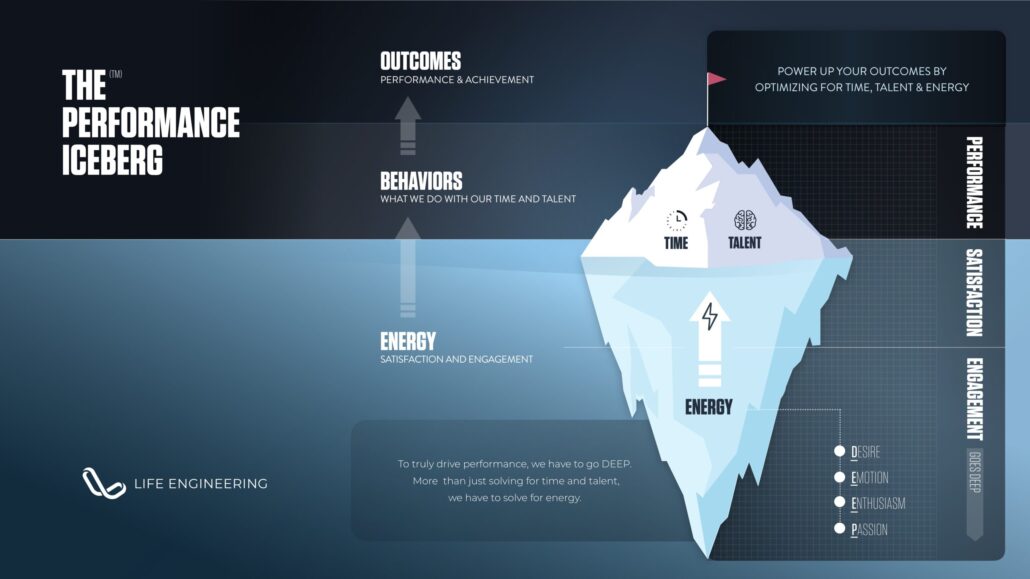
Emotional Capital
Learn more about our critically acclaimed Performance Iceberg, and how Emotional Capital is the most important capital in driving organizational performance.

Employee Satisfaction
Visit our Center for Employee Satisfaction to learn all about why it matters, how to manage it, and how to measure it with ENPS and our proprietary ESS reports.

Employee Engagement
Visit our highly interactive Center for Employee Engagement. Learn how to measure it and optimize it to produce high-performing and highly engaged cultures.
Want to access the resources without giving us your information? We understand; click here.


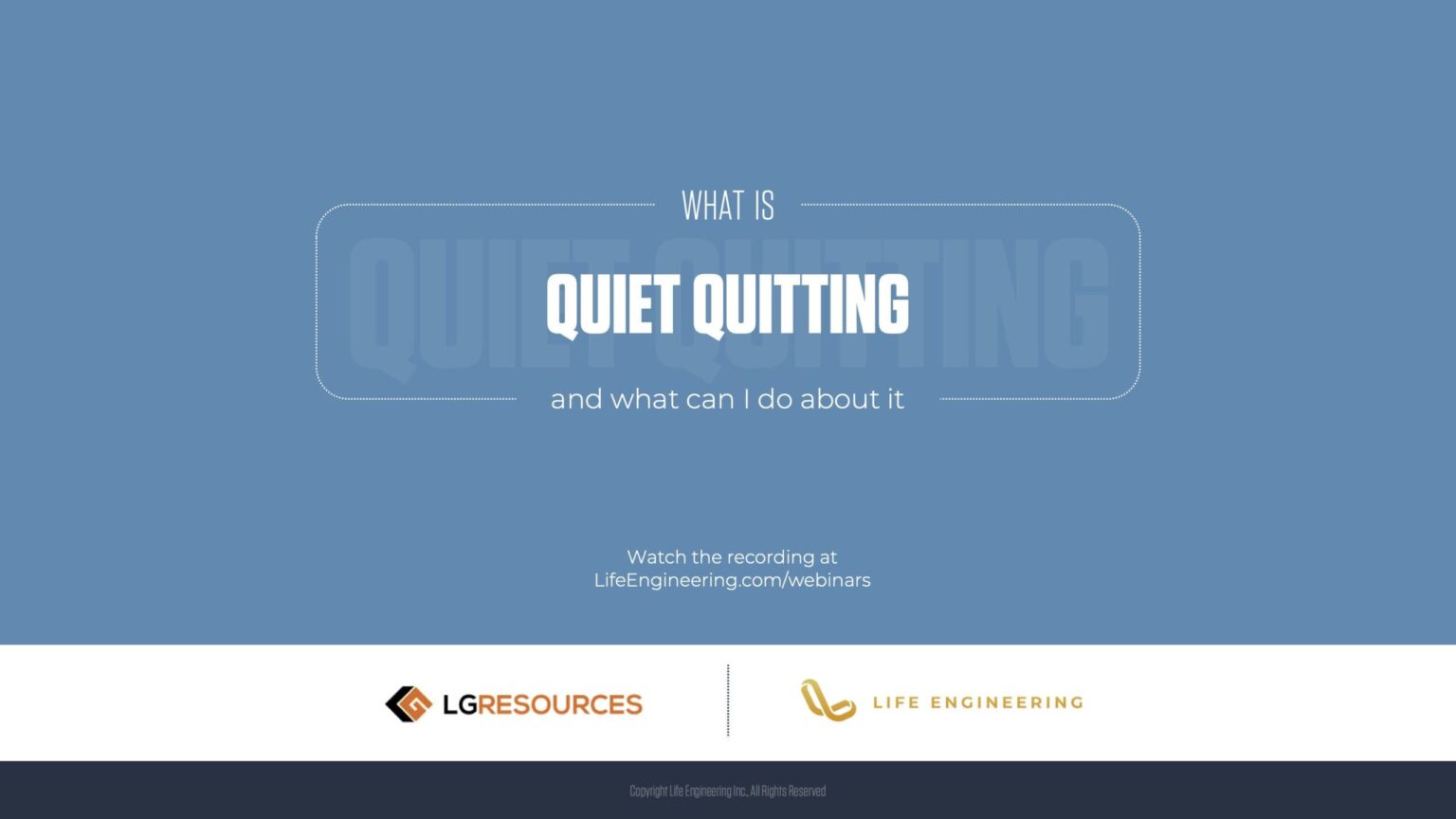
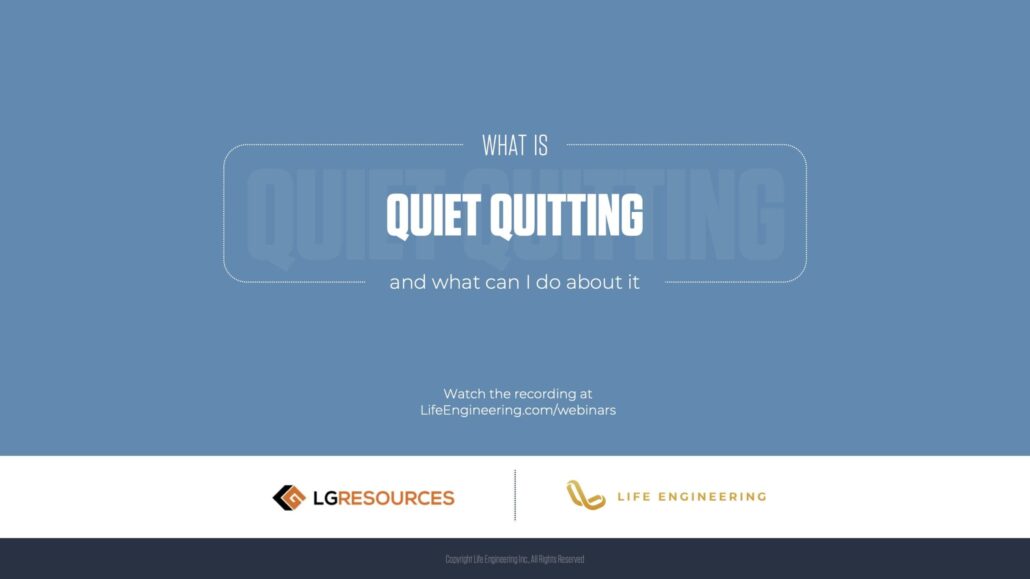
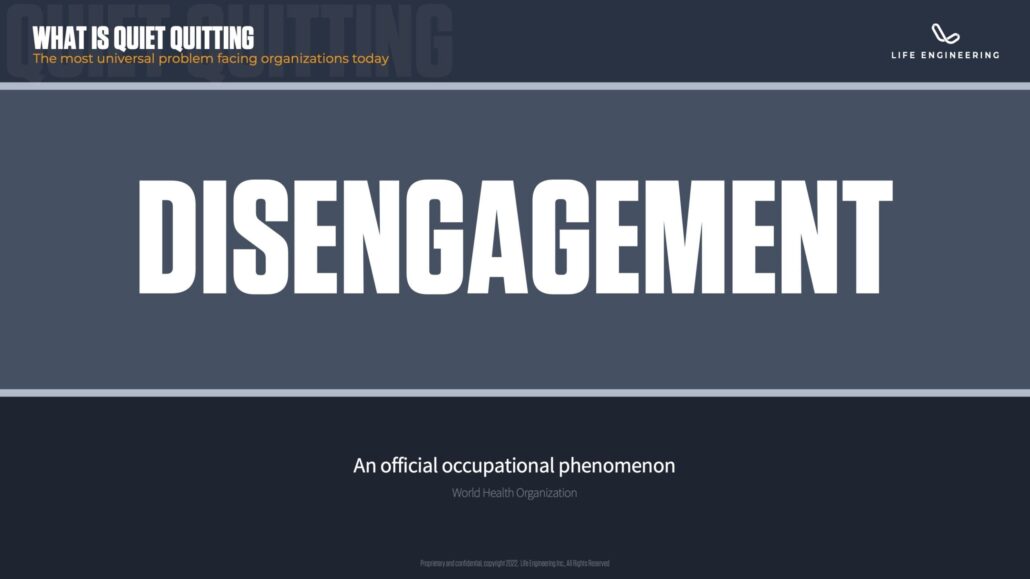
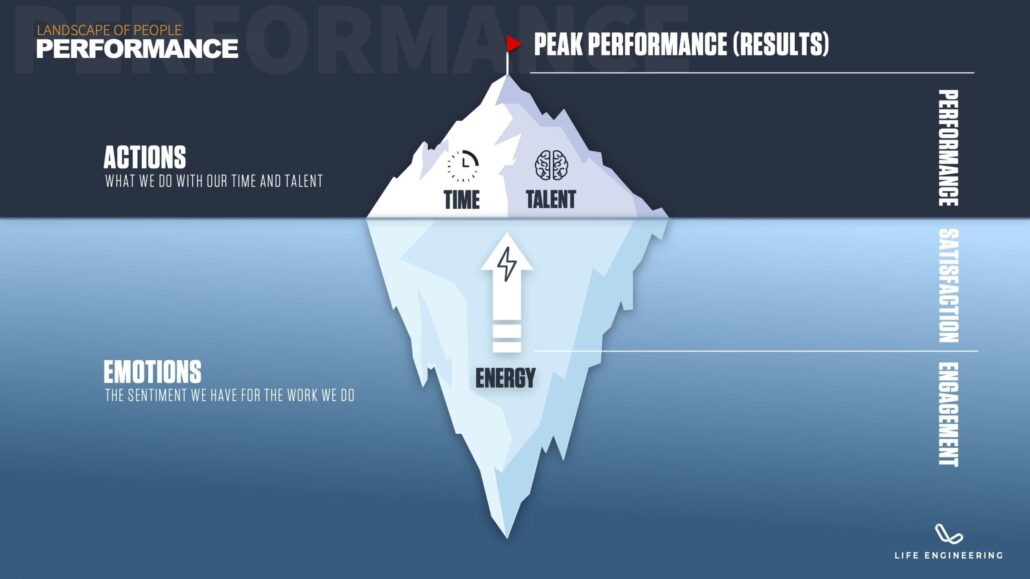
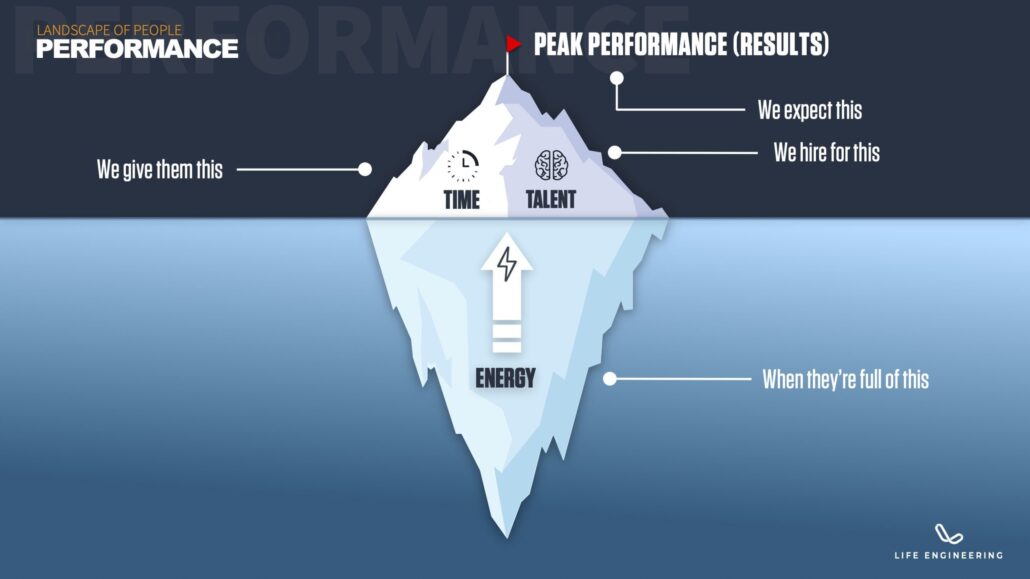
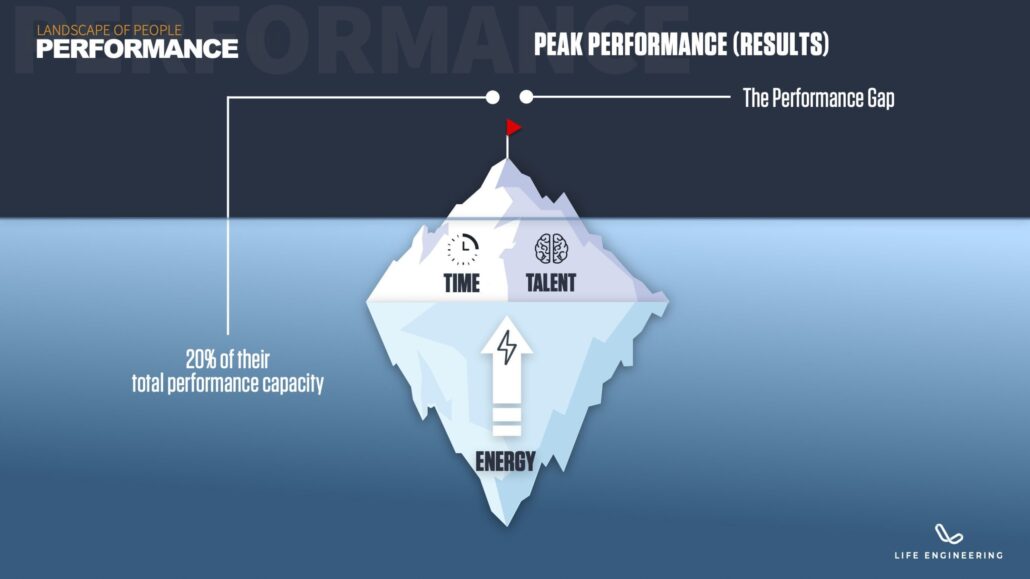
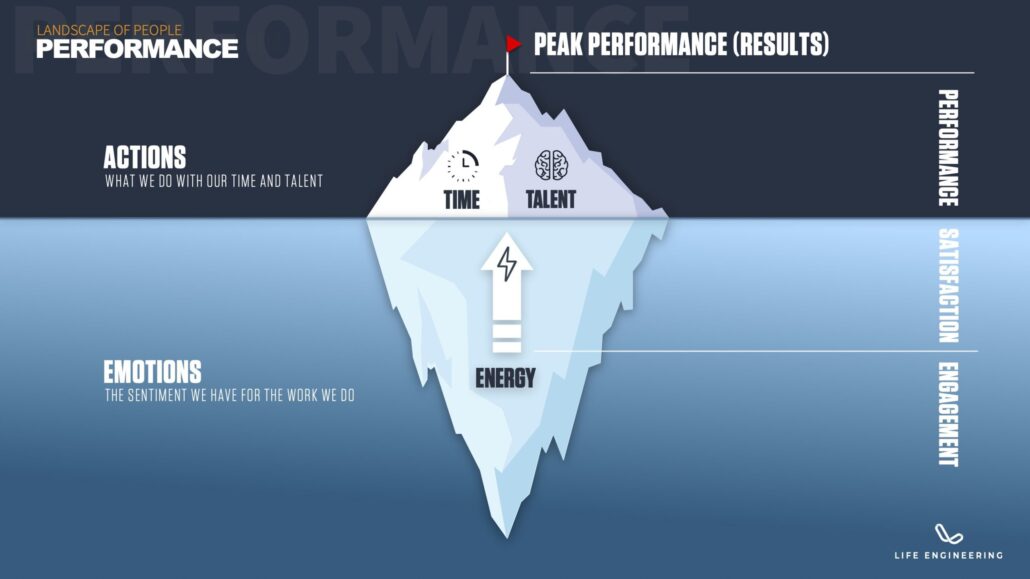
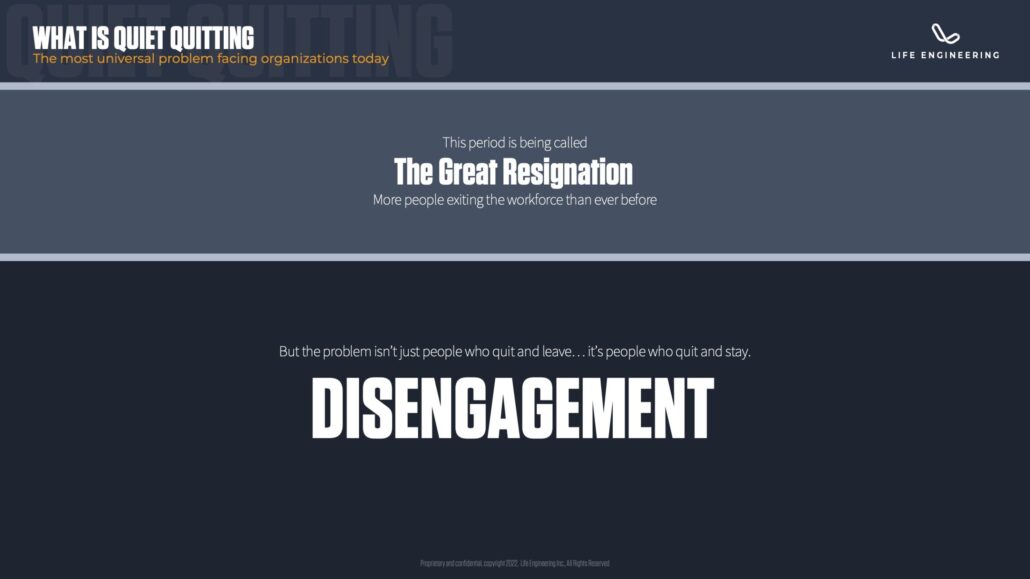
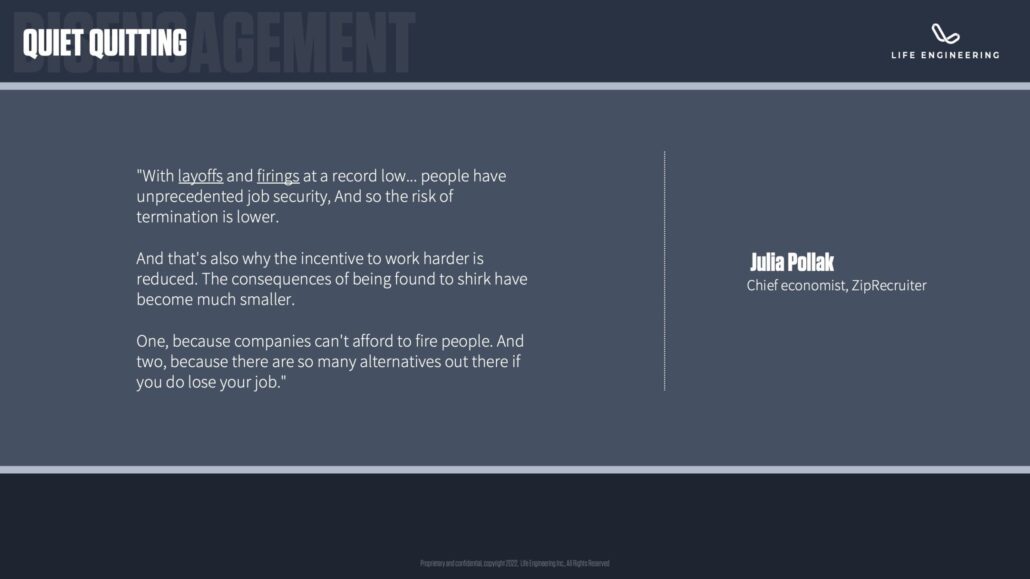
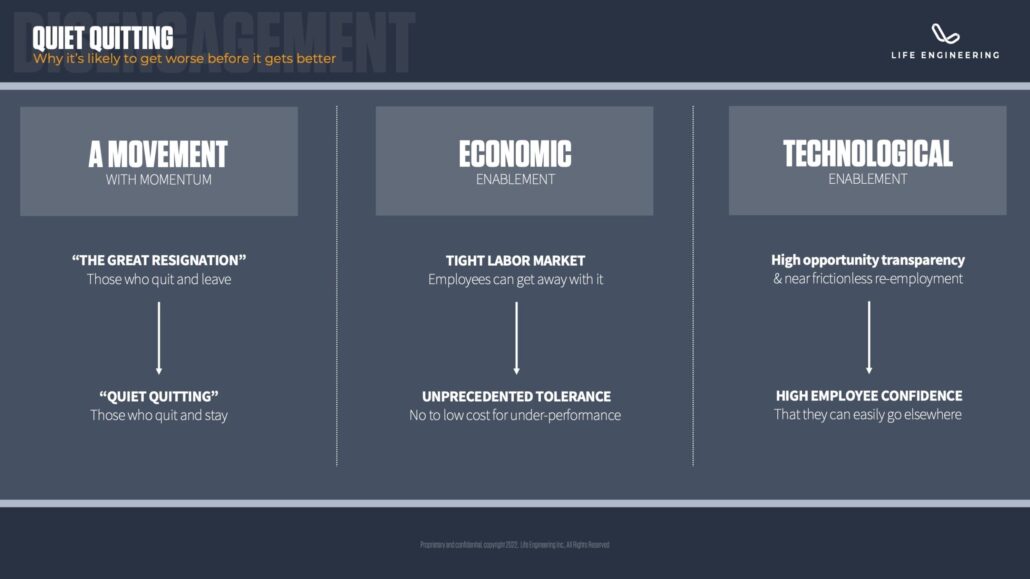
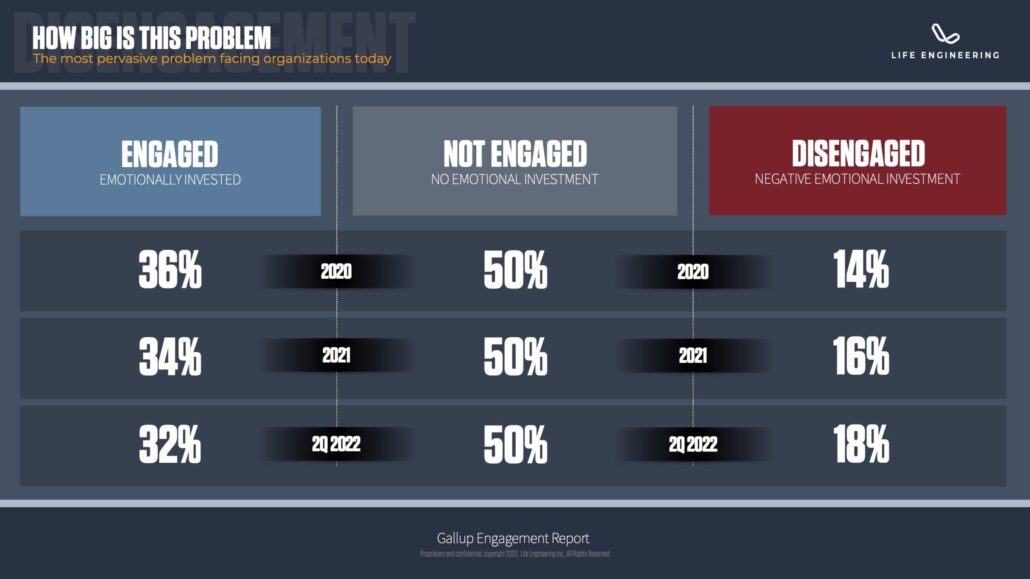
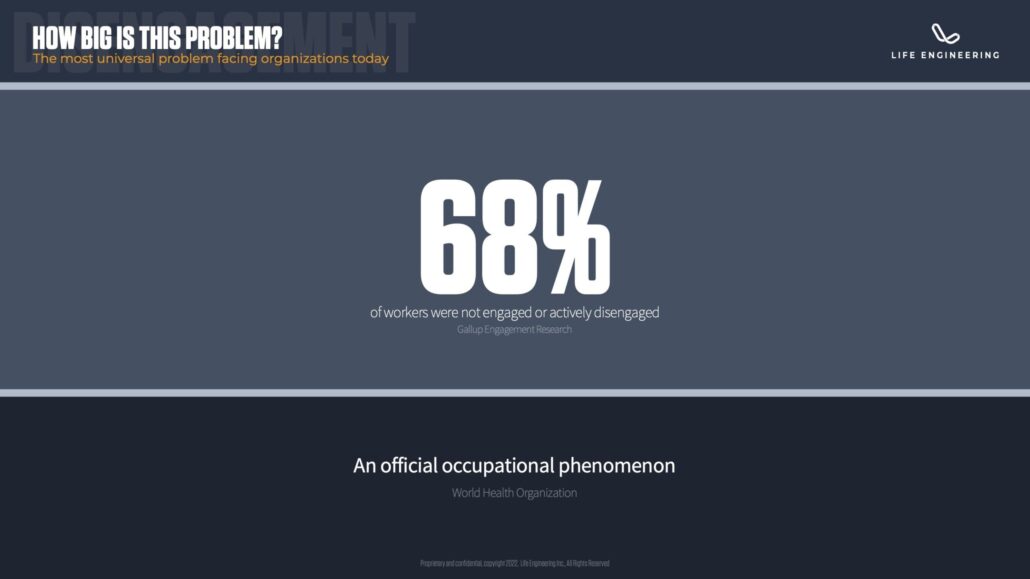
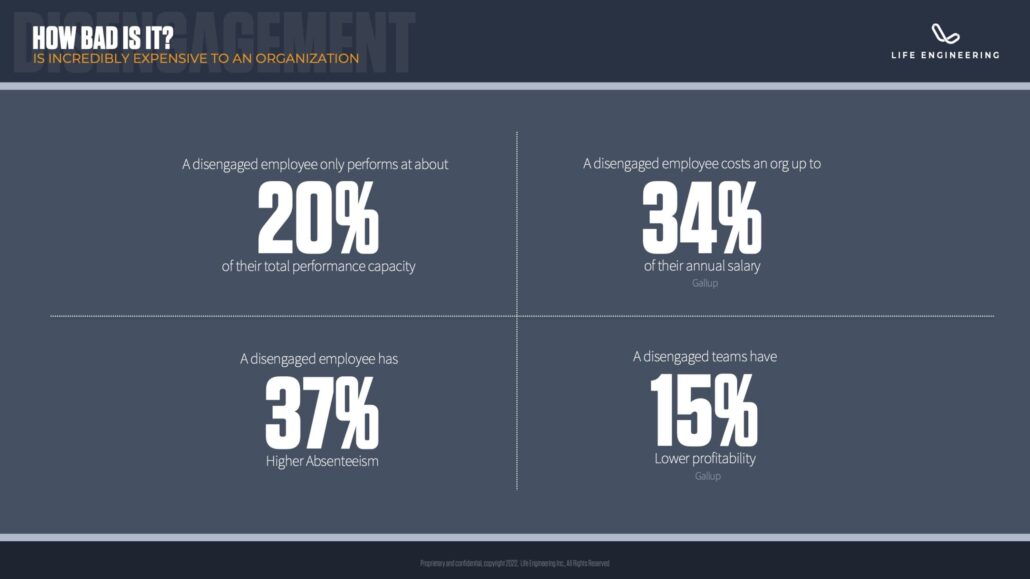

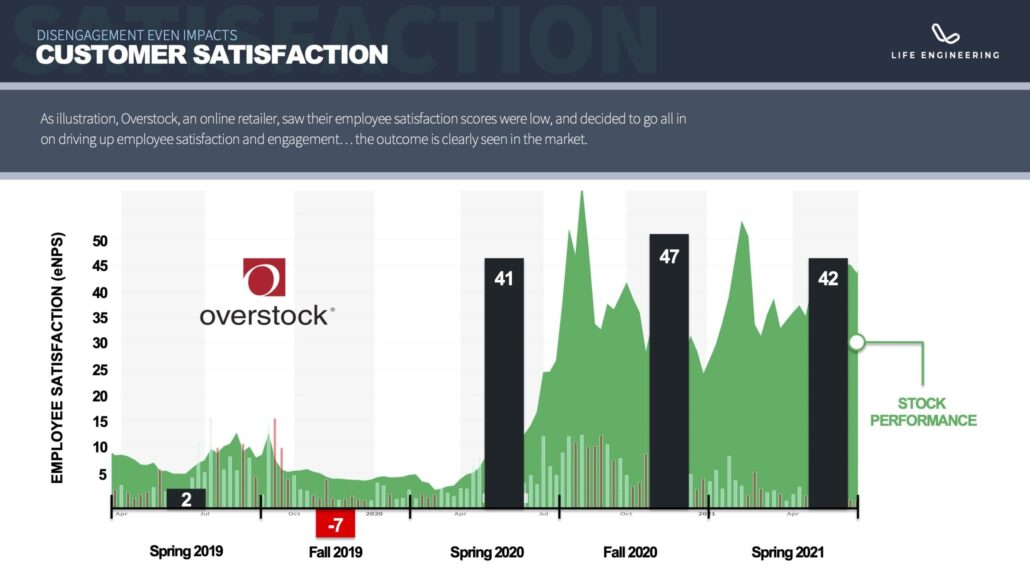

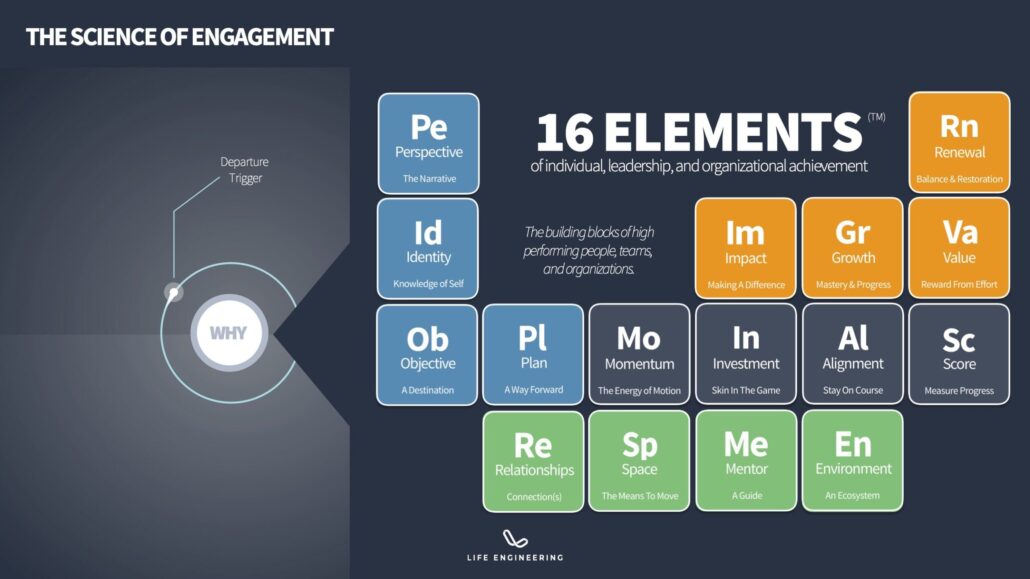
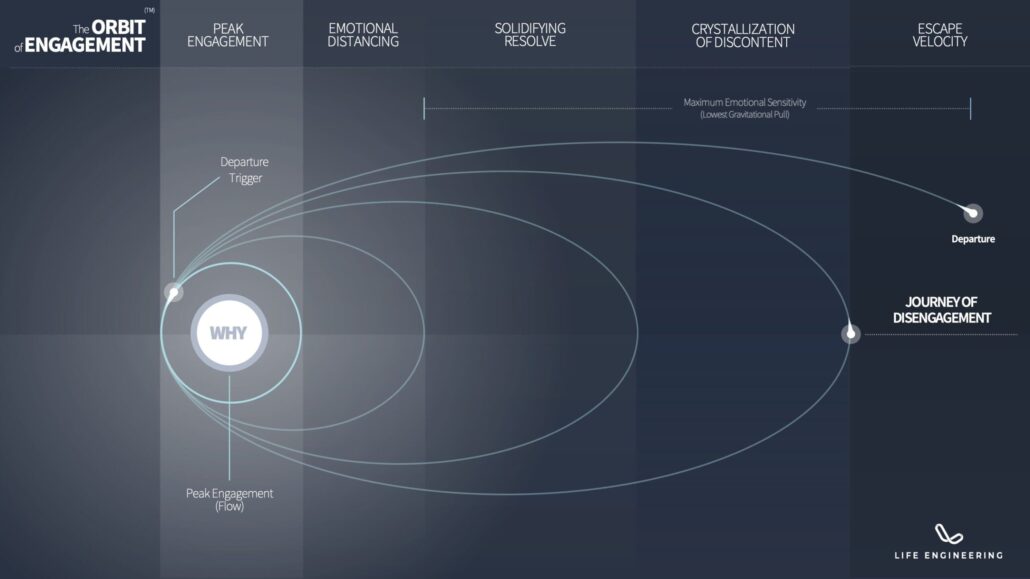
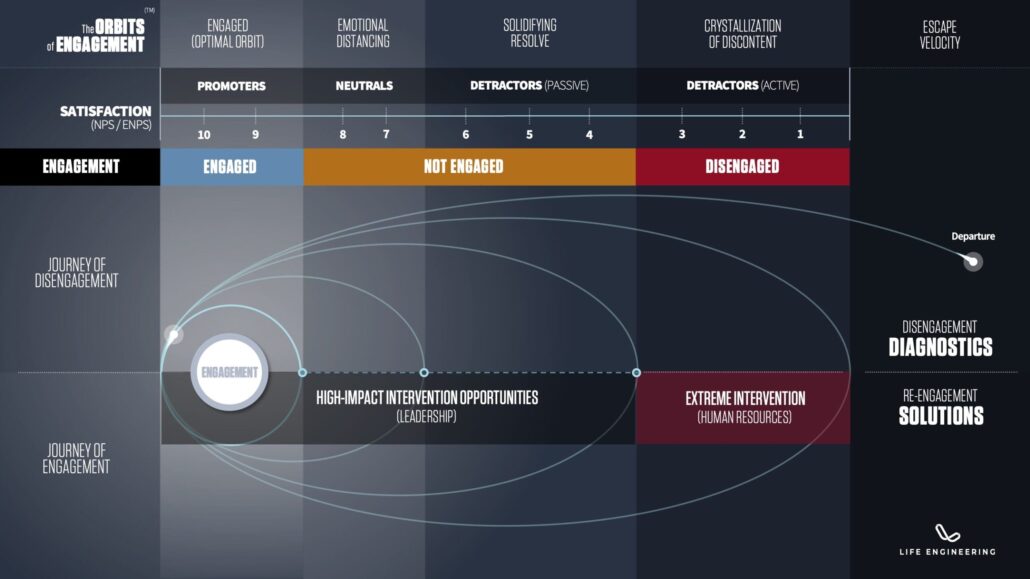

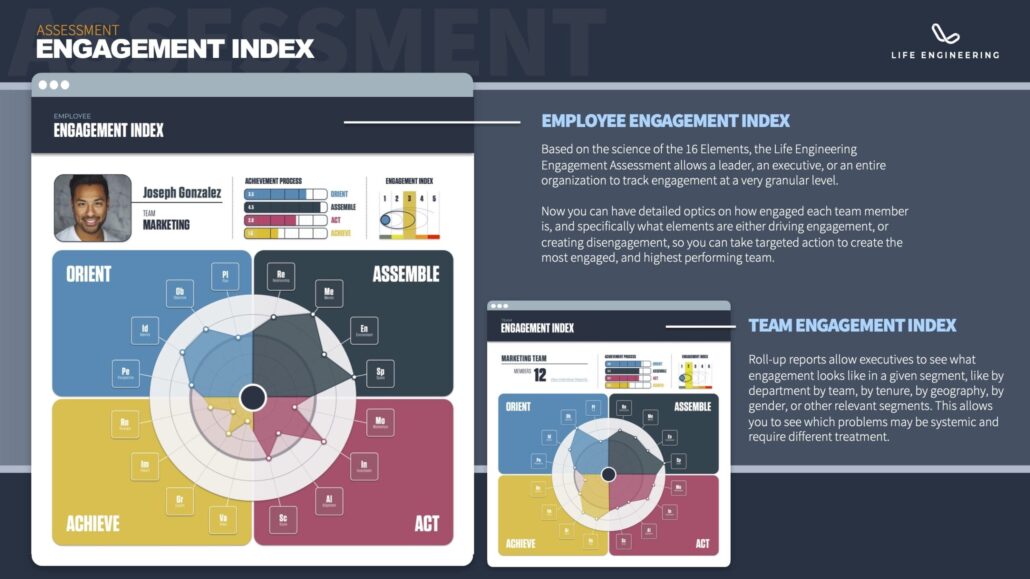


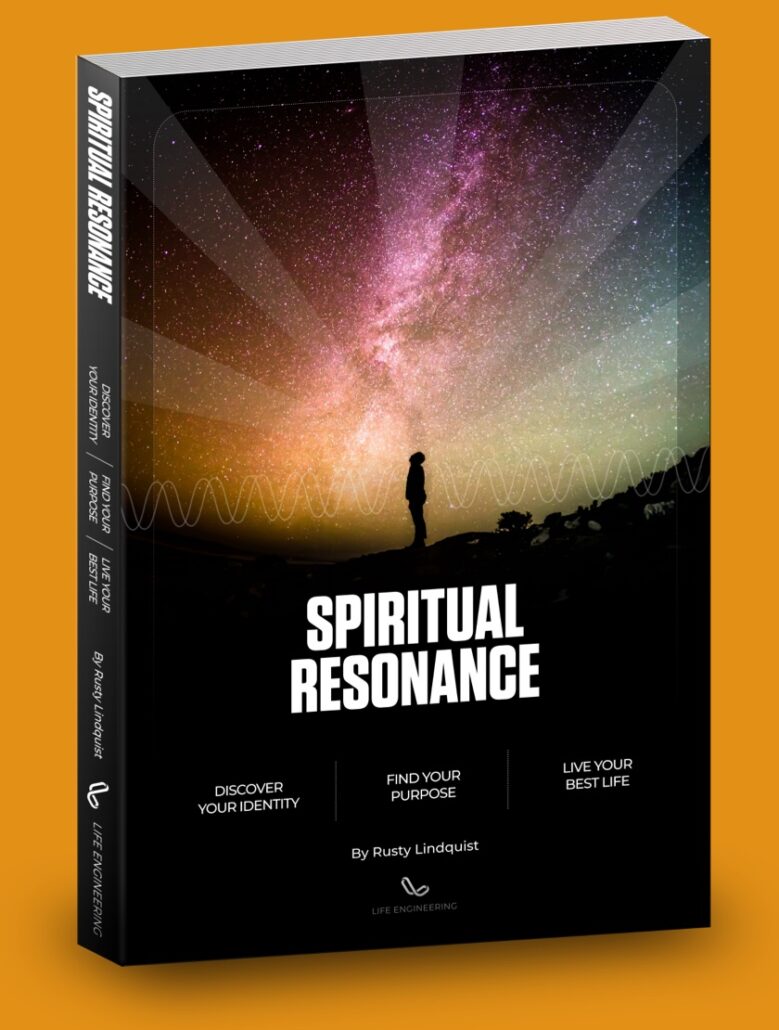
Responses